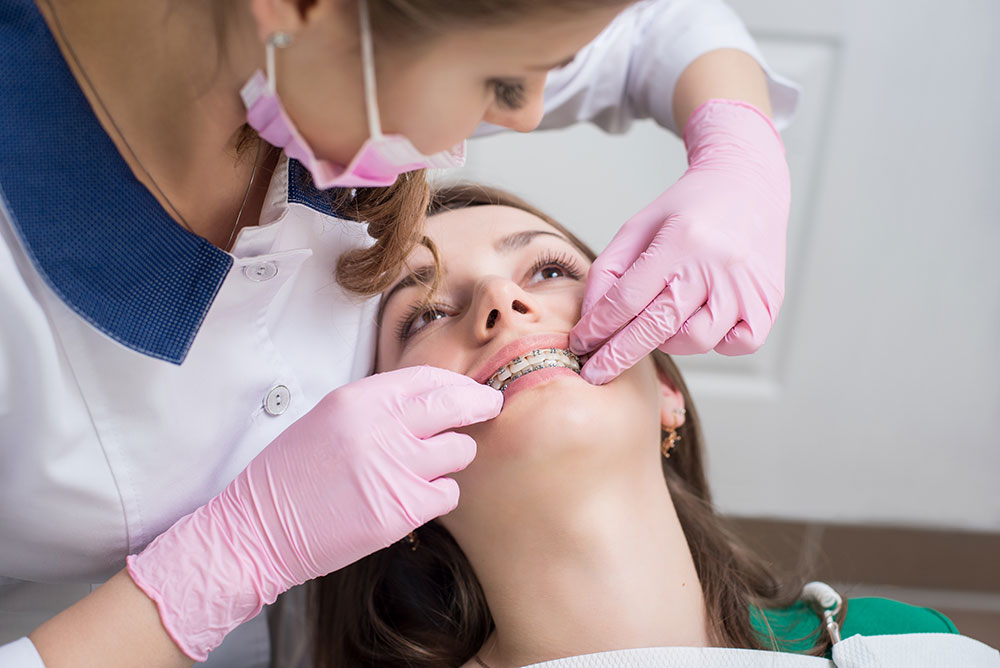The 30-Second Trick For Legacy Orthodontics
The 30-Second Trick For Legacy Orthodontics
Blog Article
What Does Legacy Orthodontics Mean?
Table of ContentsSome Of Legacy OrthodonticsThe Best Guide To Legacy OrthodonticsThe Buzz on Legacy OrthodonticsThe Legacy Orthodontics DiariesThe Single Strategy To Use For Legacy Orthodontics
In enhancement, we provide flexible therapy timetables, adaptable payment options and an enjoyable, pleasurable experience.An orthodontist is a dentist educated to diagnose, stop, and treat teeth and jaw irregularities. They correct existing problems and are educated to recognize issues that may develop in the future. Orthodontists collaborate with people of all ages, from children to grownups. Individuals frequently link an excellent smile with healthiness.
Malocclusion, or misaligned teeth, can lead to oral issues, including dental cavity, gum tissue illness, and challenging or agonizing eating. Yet not everyone is birthed with straight teeth. If you have a bad bite or huge areas in between your teeth, you may wish to speak with a dental practitioner concentrating on orthodontic care.
The Main Principles Of Legacy Orthodontics
( Photo Credit: DigitalVision/Getty Images) Orthodontists utilize fixed and detachable oral devices, like dental braces, retainers, and bands, to transform the setting of teeth in your mouth. Orthodontic treatment is for dental abnormalities, including: Uneven teethBite issues, like an overbite or an underbiteCrowded teeth or teeth that are also far apartJaw misalignmentThe objective of orthodontic treatment is to enhance your bite.
A healthy bite guarantees you can eat, eat, and speak properly. While you could think about orthodontists as mostly for children or teens that require dental braces, they can deal with oral problems at any type of age. Orthodontists participate in college, oral college, and orthodontic college. After college graduation, they invest 2 or 3 years in an orthodontic residency program.
All orthodontists are dental experts, but not all dentists are orthodontists. Orthodontic residency programs use intensive, concentrated direction for oral professionals. They concentrate on two areas: How to properly and securely relocate teeth Just how to appropriately guide growth in the teeth, jaw, and faceOnce an orthodontist has actually completed training, they have the choice to end up being board licensed.
The smart Trick of Legacy Orthodontics That Nobody is Discussing
Malocclusion leads to tooth congestion, an askew jaw, or uneven bite patterns. Malocclusion is usually treated with: Your orthodontist affixes metal, ceramic, or plastic square bonds to your teeth.
If you have just small malocclusion, you may have the ability to use clear dental braces, called aligners, rather of traditional braces (https://www.reverbnation.com/legacyorthodontics). Some people require a headwear to aid relocate teeth right into line with stress from outside the mouth. After braces or aligners, you'll require to put on a retainer. A retainer is a personalized tool that keeps your teeth in position.
They can create additional space in the mouth without having to pull teeth. Orthodontists use wires, medical screws, or plates to sustain your jaw bone.
You may need to see an orthodontist if you have: Crowding or not enough room for all of your teethOverbite, when your top teeth come your base teethUnderbite, when your base teeth are too much forwardSpacing or concerns with gapsCrossbite, which is when your upper teeth fit behind your bottom teeth when your mouth is closedOpen bite or an upright gap between your front bottom and upper teethMisplaced midline, when the facility of your bottom and upper teeth don't line up Dealing with a dental malocclusion can: Make biting, eating, and talking easierImprove the symmetry of our face and your total appearanceEase pain from temporomandibular joint problemsSeparate your teeth and make them much easier to clean up, aiding protect against dental caries or dental caries It's typically a dental practitioner that first notices misaligned teeth during a routine test.
Not known Details About Legacy Orthodontics

During your first orthodontic consultation, you'll likely have: A dental examPhotos taken of your face and smileDental X-raysPanoramic (360 degree) X-rays of your face and headImpressions to develop molds of your teethThese tests will assist your orthodontist recognize exactly how to continue with your therapy. leesburg orthodontics. An orthodontist is a dental practitioner who's had training to treat your teeth and jaw
An orthodontist is focused on your bite, so something like a damaged tooth would certainly be managed by a dental practitioner. Orthodontists are focused on your bite, or the method your teeth fit with each other, and the straightness of your teeth.
Ever before questioned exactly how celebrities always seem to have flawlessly straightened teeth? Orthodontists are oral professionals that focus on correcting abnormalities in the teeth and jaws.
The smart Trick of Legacy Orthodontics That Nobody is Discussing

, orthodontists have a varied toolkit at their disposal. These tried-and-true braces use a system of braces bonded to the teeth and connected by cables.
Clear aligners, like Invisalign, are a preferred option for clients looking for a more discreet therapy alternative. These detachable trays are custom-made to considerably shift the teeth's setting. Headgear might be utilized combined with dental braces or aligners to use added targeted forces, especially for remedying jaw discrepancies. In situations of narrow jaws, palatal expanders can be used to produce space for proper tooth positioning.
Report this page